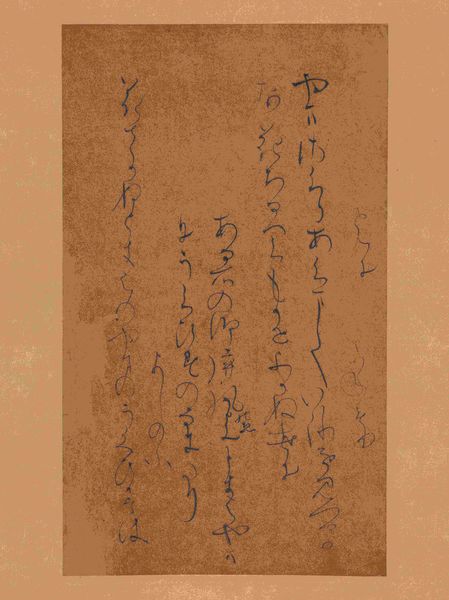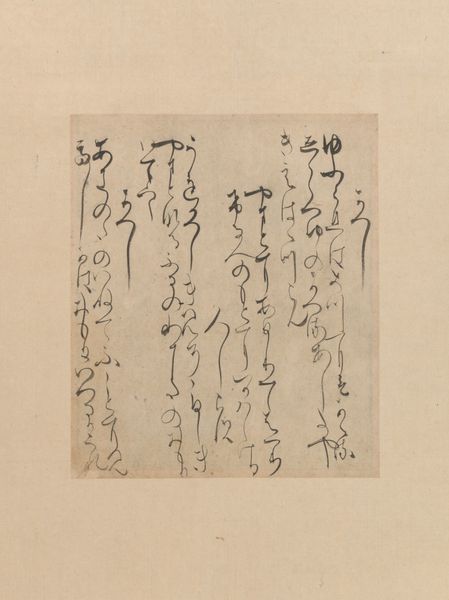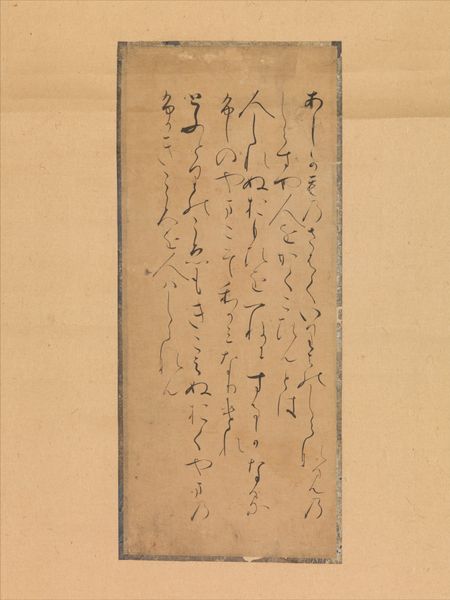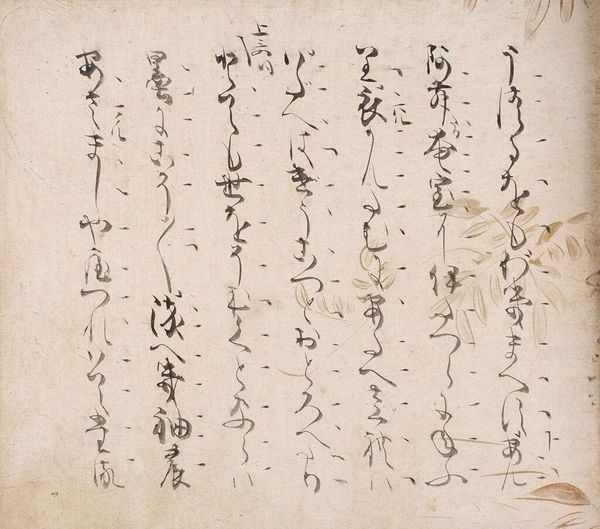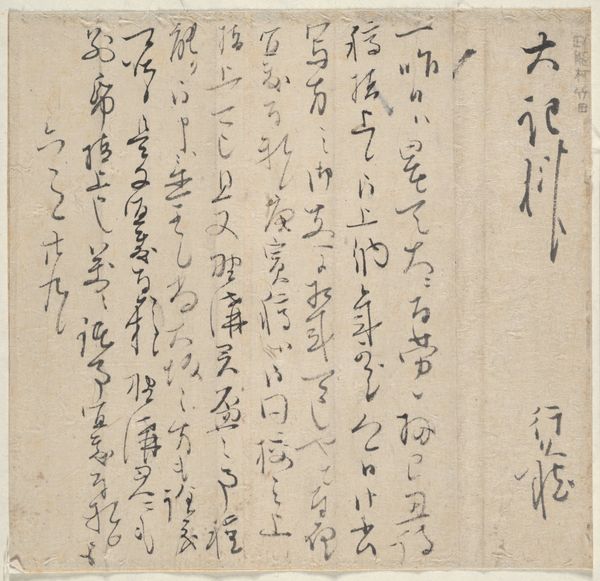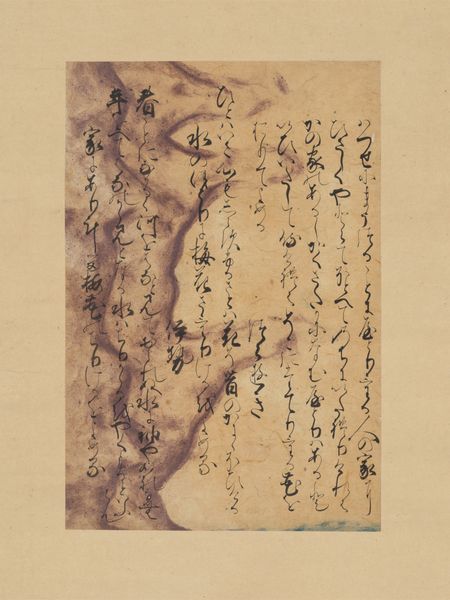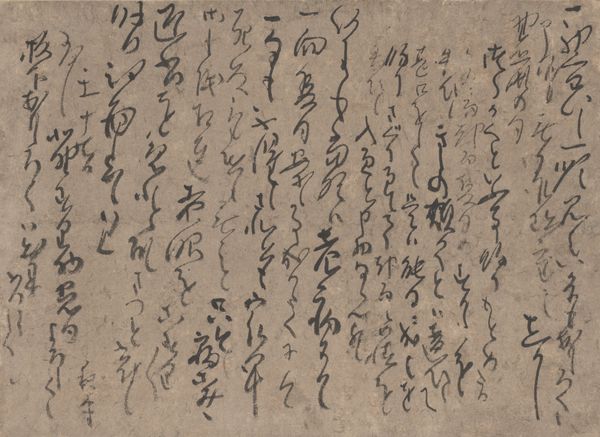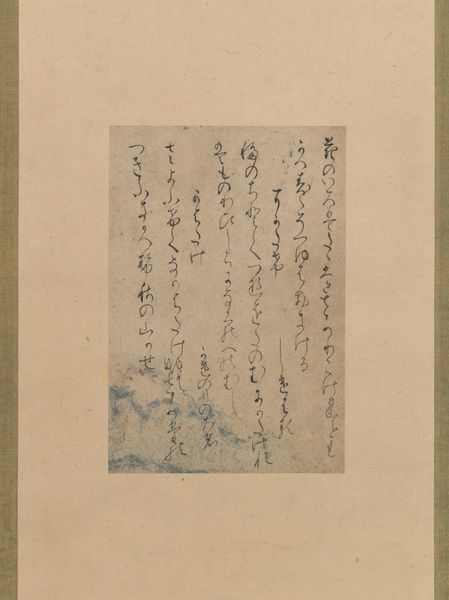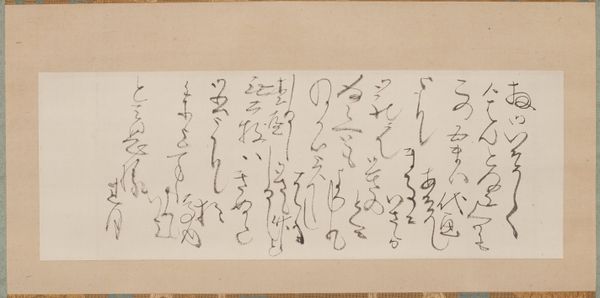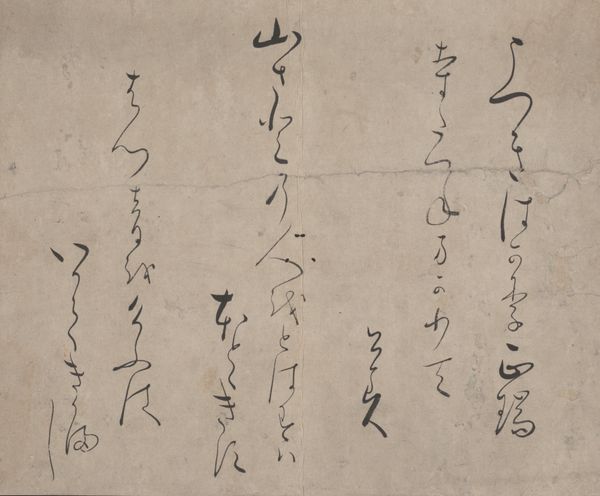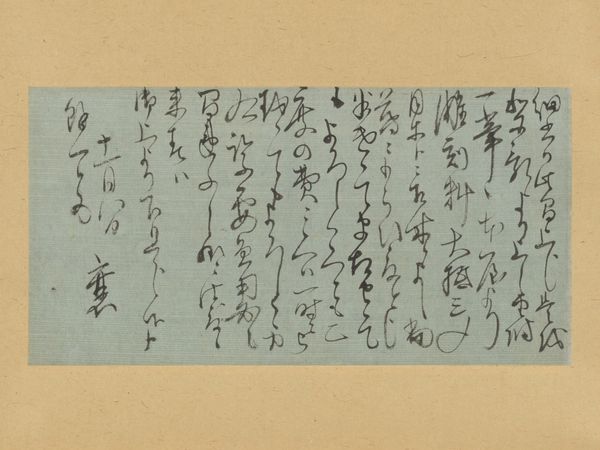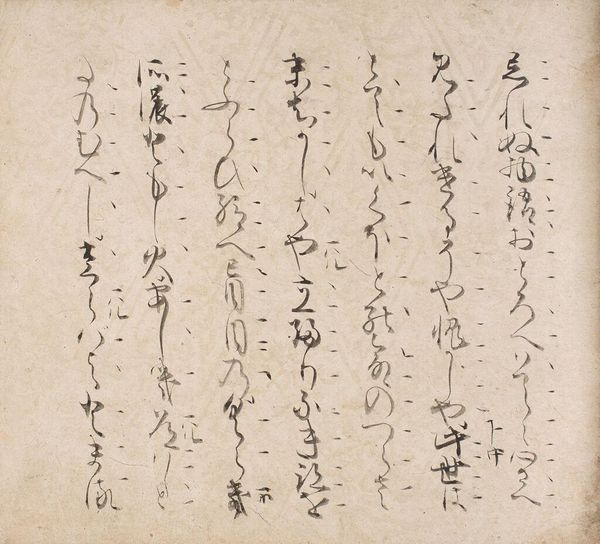
Three poems from the “Later Collection of Japanese Poems” (Gosen wakashū), known as the “Karasumaru Fragment” (Karasumaru-gire) 1100 - 1133
0:00
0:00
#
aged paper
#
toned paper
#
ink paper printed
#
asian-art
#
sketch book
#
white palette
#
japan
#
personal sketchbook
#
sketchbook drawing
#
sketchbook art
#
soft colour palette
#
watercolor
#
calligraphy
Dimensions: Image: 8 1/8 in. × 5 in. (20.6 × 12.7 cm) Overall with mounting: 48 7/16 × 14 3/16 in. (123 × 36 cm) Overall with knobs: 48 7/16 × 15 11/16 in. (123 × 39.8 cm)
Copyright: Public Domain
Fujiwara no Sadayori brushed these three poems from the “Later Collection of Japanese Poems” onto paper, capturing more than just words. The flowing script, known as kana, becomes itself a powerful visual symbol. Calligraphy, in its essence, is the art of making the invisible visible. Think of the way Chinese calligraphy, with its roots in divination, evolved from representing objects to embodying philosophical concepts. Similarly, the elegant curves and strokes here transcend mere communication; they evoke a deep, aesthetic, almost spiritual response. The arrangement and style of the characters also remind us of the impermanence of things, a concept central to Buddhist thought. Each stroke is a fleeting moment, a dance of ink and brush, never to be replicated exactly. This mirrors the transient beauty of the autumn season described in the poems, a poignant expression that engages viewers with themes of beauty, loss, and the relentless passage of time.
Comments
No comments
Be the first to comment and join the conversation on the ultimate creative platform.
